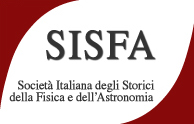Speaker
Description
In the mid-eighteenth century, one of the most urgent astronomical problems was to determine the exact value of the Earth-Sun distance (the so-called Astronomical Unit, AU), necessary to establish the real dimension of the entire solar system. The most promising methods for measuring the AU, due to Edmond Halley (1656-1742) and Joseph-Nicolas Delisle (1688-1768), were both taking advantage of a rare phenomenon: Venus transit over the Sun, expected to occur in 1761 and 1769. According to those methods, observers – spread all over the two Earth hemispheres – taking simultaneous and accurate measurements of the transit would have enabled derivation of the solar parallax and hence of the AU (with an uncertainty of less than 1%, at least in Halley’s intent).
Thus, in a world torn apart by the Seven Years War (1756-1763) and the subsequent struggles for colonial hegemony, more than 250 astronomers and scholars from different nations, animated by a common purpose in the spirit of Enlightenment, gave life to an incredible joint venture, never attempted before, which is considered the first international scientific collaboration. Among them, was the Italian scientist Giovanni Poleni (1683-1761), who observed the 1761 transit from Padua.
Padua looks then the right location in which the story of the two Venus transits can be told. A story that was not only an incredible astronomical enterprise but also a masterful example of how science had and has still today the power to overcome national boundaries and hostilities.

